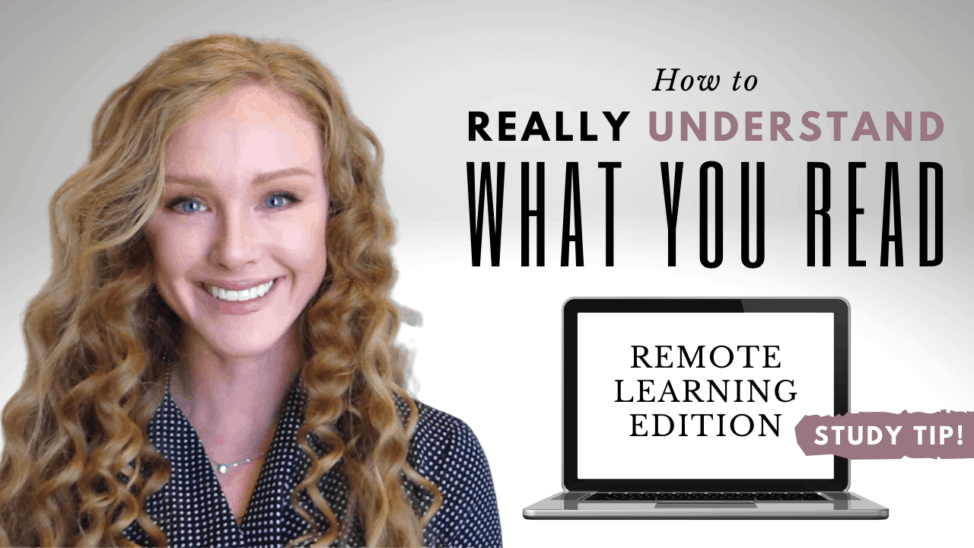By Katie Azevedo, M.Ed.
Reading is one thing. Understanding it is another. No joke though. We’ve all read a whole page before without understanding one word on it. Am I right?
I’m right.
If you’re taking an online course or doing remote learning, understanding what you read can be even harder, because you don’t necessarily have a teacher right there to explain it to you or to present the material differently.
Furthermore, it can be hard to understand what you read when you’re not in a classroom setting, because many of us learn more from the class discussions and group conversations than we do from our teacher alone. But if you’re taking an online class or learning remotely, you miss out on those “learning out loud” experiences.
If you want this strategy explained in video, then here’s my video tutorial:
So what do we do? How do we actually understand what we’re reading when we are reading it?
Here’s the answer you don’t want to hear: We have to think about what we are reading.
Here’s how to do that: create on-going reading summaries.
- When you’re reading something dense, like a textbook or an article, stop reading after every paragraph or so to write a 1-2 sentence summary of what you just read. Do not write more than 2 sentences.
- If you can’t distill one paragraph into 1 or 2 sentences, you didn’t understand it. If you can’t write this simple summary, then you have to go back and re-read the paragraph until you can summarize it.
- Write your summaries in the margins. You can do this in an app if you’re reading online, or you can print out the text and write your summaries on paper.
Will this strategy slow down your reading? Yep. Will it annoy you? At times. But will you understand what you read? Abso-freaking-lutely.
Here’s why this works: The very act of going back to something you just read and thinking about it – to the point where you can summarize it – is learning. It’s forcing you to slow down and think did I understand that?
Also, at the end of your reading, you’ll have a collection of short concise summaries that, when put all together, will be a helpful summary of the entire text. This could come in handy if you need to reference the text later for questions, an essay, or a quiz.
The trick to how to understand what you read has nothing to do with being a genius. It’s simply a matter of using the right strategies to check in with yourself while you read (this is called metacognition) to see if you really get what’s happening. Again, we have to think about what we are reading before we will ever understand it.

